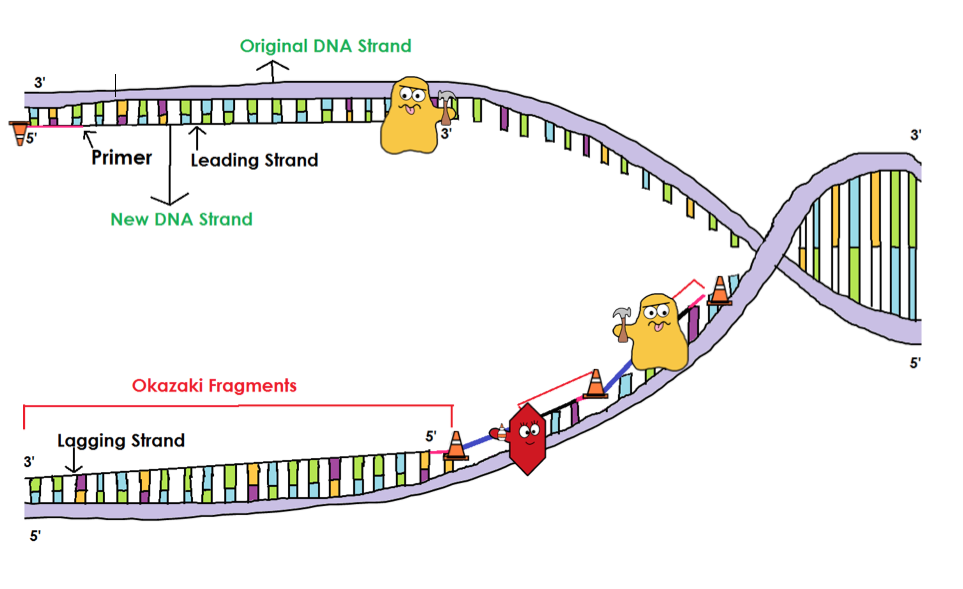


This event is an essential aspect of the cell cycle because replication allows for each cell created by cell division to have the same genetic make-up. S phase, or synthesis, is the phase of the cell cycle when DNA packaged into chromosomes is replicated. The bubble is stabilized by single-strand binding proteins that bind to the individual strands and prevent the helix from winding back up again and topoisomerase, an enzyme that relieves tension in the other parts of the helix by cutting, unwinding, and resealing the DNA. How do all the replication bubbles join together? Because the two strands of original or parental DNA run in opposite directions, the new strands must be made in different ways. Which protein joins together the Okazaki fragments of DNA in the lagging strand? DNA ligase joins the Okazaki fragments in the lagging strand, turning it into a continuous strand. Read More: What is the main purpose of an ACK? Which protein joins together Okazaki fragments of DNA in the lagging strand? … Therefore, Okazaki fragments are formed during the synthesis of lagging template strand. Hence, both strands should serve as a template in DNA replication. Why are Okazaki fragments formed during DNA replication?ĭNA replication occurs in a semi-conservative manner where one of the DNA strands in the newly synthesized double-stranded DNA is an original strand. Why must there be a lagging strand during DNA synthesis? Explanation: The lagging strand exists because DNA is antiparallel and replication always occurs in the 5′ to 3′ direction. If two pieces of DNA have matching ends, ligase can link them to form a single, unbroken molecule of DNA. What enzyme is used to bind DNA fragments together?ĭNA ligase DNA ligase is a DNA-joining enzyme.
#OKAZAKI FRAGMENT QUIZLET FREE#
… The fragments exist as replication of DNA takes place in the 5 -> 3 direction due to the action of the DNA polymerase on the 3- OH of the current strand to add free nucleotides. Okazaki fragments are formed on the lagging strand for the synthesis of DNA in a 5 to 3 direction towards the replication fork. Word origin: named after its discoverers, Reiji Okazaki and his wife, Tsuneko Okazaki, while studying replication of bacteriophage DNA in Escherichia coli in 1968. How are Okazaki fragments on the lagging strand joined together quizlet?įinally, the Okazaki fragments are joined together by DNA ligase that hooks together the 3′ end of one fragment to the 5′ phosphate group of the neighboring fragment in an ATP- or NAD+-dependent reaction. The enzyme responsible for joining Okazaki fragments together during DNA replication is: DNA polymerase. What joins Okazaki fragments together quizlet? What enzyme attaches Okazaki fragments together?ĭNA ligase I There is compelling evidence that DNA ligase I is predominantly responsible for joining Okazaki fragments generated by discontinuous DNA synthesis on the lagging strand at the replication fork. … Then, DNA ligase I binds to the PCNA, which is clamped to the nicks of the lagging strand, and catalyzes the formation of phosphodiester bonds. During lagging strand synthesis, DNA ligase I connects the Okazaki fragments, following replacement of the RNA primers with DNA nucleotides by DNA polymerase.


 0 kommentar(er)
0 kommentar(er)
